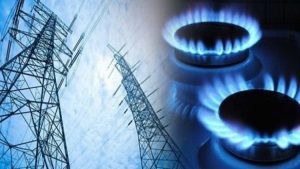In the latest development, both regulatory bodies, the National Electricity Power Regulatory Authority (Nepra) and the Oil and Gas Regulatory Authority (Ogra), have granted approval for another round of increases in electricity and gas rates. Nepra has sanctioned a hike of 3.07 rupees per unit under fuel charges adjustment. This decision follows the regulator’s recent revelation that all distribution companies systematically overcharged consumers by a staggering 100 percent. Notably, even protected consumers, those utilizing less than 200 kWh per month, were consistently billed at the rate intended for upper slab users.
Similarly, Sui Northern Gas Pipeline Limited has received approval for a substantial increase of 137 percent in gas rates. This comes on top of the previously implemented gas rate hike effective from November 1 for all consumer categories. Particularly noteworthy is the surge in charges for protected consumers, skyrocketing from 10 rupees to 400 rupees—a remarkable 3900 percent increase in one go. These decisions by the regulatory authorities are likely to impact consumers and raise concerns about the affordability and accessibility of essential utilities for the general public.
Navigating Economic Turmoil: Pakistan’s Struggle with Rising Utility Costs and IMF Conditionalities
In the face of soaring electricity and gas rates, the backdrop reveals a complex interplay of economic decisions tied to ongoing multilateral agreements, particularly the nine-month $3 billion Stand-By Arrangement with the International Monetary Fund (IMF). While the current economic strategy hinges on achieving full cost recovery, the real concern lies in the persistent reliance on price upgrades, rather than instituting vital structural reforms to address sector inefficiencies.
Historically, subsidies cushioned the impact on the public, but with lenders demanding structural reforms and a looming risk of default, the nation finds itself at a critical juncture. Electricity and Gas Recent administrative measures coincide with a staggering 29.2 percent consumer price index (CPI) for November 2023, disproportionately affecting low to middle-income earners and eroding their quality of life.
Compounding the issue, the IMF’s insistence on linking the policy rate to the CPI, instead of core inflation, raises questions about its applicability in Pakistan’s unique economic landscape. Unlike Western economies, the policy rate’s impact on the general public is limited due to borrowing constraints and a lack of mortgage culture. Moreover, the largest borrowers, the manufacturing sector, and the government face escalating input costs, negatively impacting productivity and growth.
Despite repeated attempts, no finance minister or Governor of the State Bank of Pakistan has persuaded the IMF to reconsider this approach. The Finance Division’s November 2023 Update underscores a 44.6 percent surge in mark-up payments attributed Electricity and Gas to a higher policy rate, highlighting the immediate economic consequences.
As inflationary pressures mount, there’s a palpable risk of widespread civil unrest and a deepening economic recession. Urgent adjustments are needed to align IMF conditionalities with Pakistan’s economic reality, lest the challenges undermine the political feasibility of implementing crucial structural reforms.
$100 billion export vision: Pakistan eyes to reduce trade deficit with China

